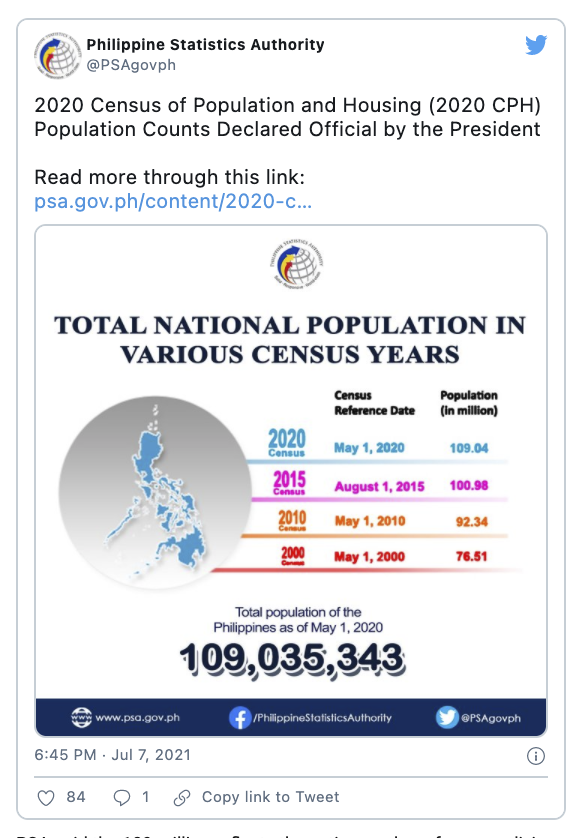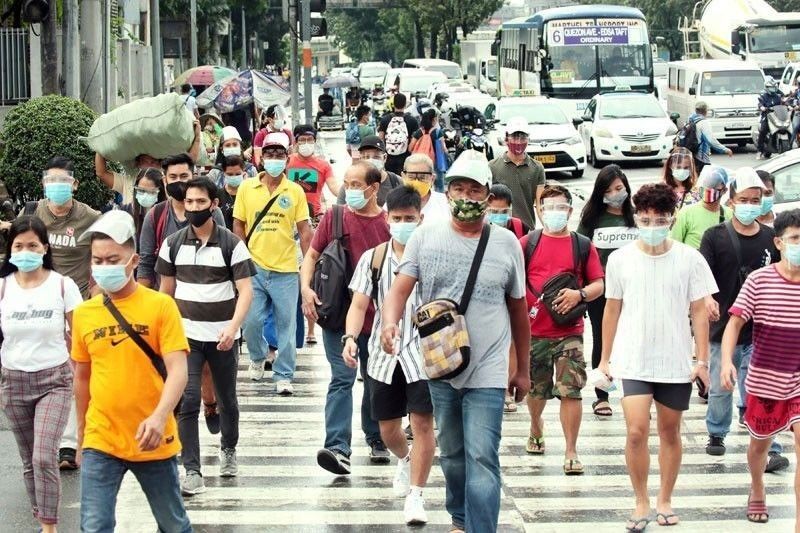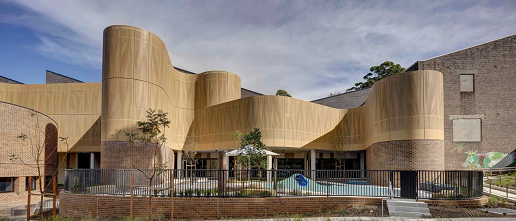According to [Philstar], the Philippine population stood at 109,035,343 in 2020 with the country seeing a 1.63% growth rate in the last five years, the Philippine Statistics Authority said Wednesday.
Such was an increase of 8,053,906 from the 100,981,437 in 2015, per official census last year.
According to [Philstar], the annual population growth rate was slightly lower than the 1.72% from 2010 to 2015. Change in the last decade was also lower, or 1.67% from 2010 to 2020 against the 1.90% from 2000 to 2010.PSA said the 109 million reflects the entire number of persons living across 17 regions in the Philippines as of May 1, 2020. This also includes those in embassies, consulates, and missions in abroad.

Tweet from the official Philippine Statistics Authority account. (Photo / Retrieved from Twitter)
National statistician Dennis Mapa said his agency "proudly overcome unprecedented challenges" to collect and produce the data amid the COVID-19 pandemic, which has limited movement due to government restrictions.
In the regions
- Across the country, PSA said Calabarzon saw the biggest increase in population since 2015, or up by 1,780,268 to bring its number of residents to 16,195,042.
- Cavite, with 4,344,829 residents, was the most populous province for the entire Philippines by 2020.
- Metro Manila came in second after Calabarzon, with 13,484,462, or up by 607,209 in the last five years.
- Quezon City remained with the most number of residents at 2,960,048, followed by Manila with 1,846,513 and Caloocan with 1,661,584.
- PSA said Central Luzon had 12,422,172 in 2020, making it third after Calabarzon and Metro Manila.
- It added that the least populated regions were: Cordillera Administrative Region with 1,797,660, Caraga with 2,804,788, and MIMAROPA with 3,228,558.
- The fastest growing region, meanwhile, was the Bangsamoro Autonomous Region in Muslim Mindanao. It saw a 3.26% growth rate from 2015 to 2020, while Eastern Visayas had the lowest at 0.50%.
Read more: CECC reinforces measures and related penalties adopted under COVID-19 Level 3 alert
Census figures were announced following Presidential Proclamation 1179, which President Rodrigo Duterte signed on Tuesday. — Christian Deiparine







